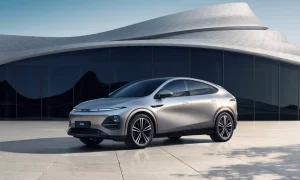
The automotive industry is rapidly transforming, and one of the most exciting developments is the rise of autonomous cars. These self-driving vehicles have the potential to revolutionize how we think about transportation, safety, and the future of urban mobility.
With advancements in artificial intelligence (AI), machine learning, and sensor technology, autonomous cars are on the cusp of becoming a mainstream reality. But what exactly are autonomous cars, and how will they shape the future of driving?
What Are Autonomous Cars?
Autonomous cars, often referred to as self-driving cars or driverless cars, are vehicles capable of navigating and operating without human intervention. These vehicles rely on a combination of sensors, cameras, radar, and AI-driven software to perceive their environment, make decisions, and control the car’s movement. The goal is to create a fully autonomous vehicle that can drive itself without any need for a human driver, even in complex driving environments.
There are different levels of autonomy, ranging from Level 0 (no automation) to Level 5 (full automation). As of now, most autonomous cars are at Level 3, where the car can perform most driving tasks but still requires human supervision in certain situations.
Key Technologies Behind Autonomous Cars
1. Sensors and Cameras
Sensors are the eyes and ears of autonomous cars. They allow the vehicle to detect and understand its surroundings. Common sensors used in self-driving vehicles include LIDAR (Light Detection and Ranging), radar, ultrasonic sensors, and high-definition cameras. These sensors work together to map the car’s environment, detect obstacles, and recognize traffic signs, road markings, pedestrians, and other vehicles.
2. Artificial Intelligence and Machine Learning
AI and machine learning play a crucial role in autonomous driving. These technologies enable the car to process vast amounts of data in real-time, learn from its environment, and make decisions based on complex algorithms. Machine learning models allow autonomous vehicles to improve their performance over time, as they “learn” from their driving experiences.
3. V2X Communication (Vehicle-to-Everything)
Vehicle-to-Everything (V2X) communication refers to the ability of autonomous vehicles to communicate with other vehicles, infrastructure (such as traffic lights and road signs), and pedestrians. This technology improves safety and efficiency by providing real-time data and enabling collaborative decision-making among vehicles on the road.
Benefits of Autonomous Cars
1. Improved Road Safety
One of the most significant benefits of autonomous cars is the potential to reduce traffic accidents caused by human error. Studies have shown that human mistakes, such as distracted driving, impaired driving, and fatigue, account for the majority of traffic accidents. Autonomous vehicles, with their advanced sensors and AI, can make faster, more accurate decisions, potentially reducing accidents and saving lives.
2. Increased Mobility for the Elderly and Disabled
Autonomous vehicles could provide greater mobility for individuals who are unable to drive due to age, disability, or other reasons. By removing the need for a human driver, autonomous cars offer a solution to help these individuals maintain their independence and access essential services, jobs, and social activities.
3. Reduced Traffic Congestion
Autonomous cars could help reduce traffic congestion by optimizing traffic flow. With the ability to communicate with other vehicles and traffic infrastructure, self-driving cars can adjust their speed, route, and spacing to create smoother traffic patterns. Additionally, autonomous vehicles could reduce the need for parking spaces, as they could drop off passengers and then park themselves in more remote areas, freeing up valuable city space.
4. Environmental Impact
Autonomous vehicles, especially electric ones, have the potential to reduce greenhouse gas emissions and help mitigate climate change. By improving traffic efficiency and reducing congestion, self-driving cars could lower fuel consumption and reduce emissions. Furthermore, the integration of autonomous technology with electric vehicles could make the transition to greener transportation even more effective.
Challenges Facing Autonomous Cars
1. Regulation and Legal Issues
One of the major hurdles facing autonomous vehicles is the lack of standardized regulations. Governments and regulatory bodies around the world are working to establish legal frameworks for autonomous driving, but these regulations are still evolving. Issues such as liability in case of accidents, insurance, and data privacy need to be addressed before autonomous cars can become commonplace.
2. Ethical Dilemmas
Autonomous vehicles may face ethical dilemmas in situations where a crash is unavoidable. For example, if an autonomous car must choose between swerving to avoid a pedestrian but hitting another vehicle, how should it make that decision? This “trolley problem” scenario has raised significant ethical and moral questions that need to be addressed as autonomous cars become more widespread.
3. Public Trust and Acceptance
While autonomous cars offer numerous benefits, there is still some resistance and skepticism among the public. Many people are concerned about the safety of self-driving cars and the potential loss of jobs in industries like transportation and delivery. Overcoming these concerns and gaining public trust will be essential for the widespread adoption of autonomous vehicles.
4. Technological Limitations
Although autonomous driving technology has come a long way, it still faces challenges. Extreme weather conditions, such as heavy rain, snow, or fog, can interfere with the sensors and cameras that autonomous vehicles rely on. Additionally, unpredictable road situations, like construction zones or accidents, can pose challenges for self-driving cars.
The Future of Autonomous Cars
As technology continues to evolve, we can expect to see even greater advancements in autonomous vehicle capabilities. Researchers are working on improving the reliability and safety of self-driving cars, and many companies are investing heavily in AI and autonomous driving technology. While it may take some time before fully autonomous cars become the norm, the future of driving is undeniably changing.
In the coming years, we may see more widespread use of semi-autonomous vehicles, where the car can assist with driving in certain conditions, such as highway driving or parking. Additionally, advancements in AI and connectivity will allow for more seamless integration of autonomous vehicles with smart cities and transportation networks.
Autonomous cars represent a monumental shift in the way we think about transportation. While there are still challenges to overcome, the potential benefits of self-driving cars – including improved safety, increased mobility, reduced traffic congestion, and a positive environmental impact – make them a compelling technology for the future. As advancements continue and the regulatory landscape evolves, the dream of a world with autonomous vehicles could become a reality sooner than we think.





